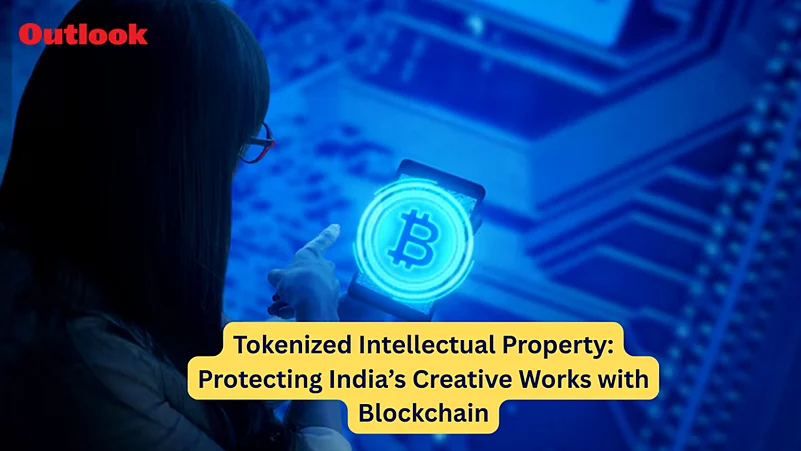India has a rich history of first-hand work, from immortal literature and traditional art to modern-day cinema, music, and computer graphics. With the internet revolution, however, it becomes more challenging to protect such work. Inventors, artists, creators, writers, designers, and authors struggle to own and prevent others from exploiting their work. A new solution is therefore emerging in this new world, thus—tokenized intellectual property based on blockchain technology.
This piece of writing talks about the tokenized intellectual property (IP) mechanism, the way blockchain can be utilized in order to protect creative content in India, and why technology matters today in the digital age.
What is Tokenized Intellectual Property?
Tokenized intellectual property is a means of passing the title of intellectual property rights over creative work into tokens stored and settled on a blockchain. The tokens act as digital proof, stating who owns what, when he created it, and how the rights are being sold. This leverages blockchain's time-stamped, open, and distributed attributes to create a secure and tamper-evident record.
For example, when a creator drops an original song, they can mint a digital token that represents their ownership of the work. They get it recorded on a blockchain network, so they can just confirm authorship and even license or issue royalty payments. Established IP rights like copyright and trademarks still apply, but tokenization adds a digital layer of protection and convenience.
Why IP Protection in India Has to Change Course
India has a huge and growing creative economy. From digital content creators of social media to Bollywood, there are millions who create something new every day. However, most of them do not have the financial and legal means to get their work legally registered or pursue their rights in court. It is difficult in most instances to prove that someone invented something first or prevent others from copying it.
India's current IP protection system, though effective, is glacial, costly, and prohibitive. Where content moves quickly and everywhere in today's digital world, such delays could prove to be mortal. Tokenized IP has the potential to offer respite in such instances. It allows creators to safeguard their work in real-time, regardless of sole dependence on traditional legal systems.
How Blockchain Makes Creative Works Securable
Blockchain is a type of digital record book that stores data on a collection of computers geographically distributed around the globe. The data entered into the blockchain cannot be modified without the consent of everyone in the network. This makes it extremely secure and trustworthy.
In intellectual property, blockchain advantages are:
It creates an indelible, time-stamped record of when something was done and by whom.
It places ownership information out in the open, and this makes the resolution of disputes easier.
It can track licensing arrangements or use terms, reducing the scope for abuse.
It facilitates the transfer of rights electronically by creators, offering them convenience and speed.
With blockchain, there is no longer any need for simple paperwork or complex legal agreements. A token on a blockchain is an unerasable digital document of ownership that cannot be disputed or erased.
The Road Ahead
India is gradually adopting digital technology in all industries, and the legal ecosystem is finally catching up with the promise of blockchain. Tokenized IP is yet to find its fledgling momentum in India. In a manner to facilitate this system to come into being, creators need to be informed, platform-friendly interfaces made available, and legal and policy framework support.
It will take education. Makers of all stripes—authors, artists, musicians, designers, coders—will need to be taught about tokenization and how it can be leveraged in their protection. Lawyers and legislators will then need to legislate such that digital tokens are included and validated as a legitimate form of ownership.
Government bodies, learning platforms, and technology companies can all collaborate to build infrastructure and market the technology. When well done, tokenized IP can provide India's creators of millions with greater control, transparency, and fair returns for their work.
Conclusion
With today's era of instant digital upheaval, ideas have become currency. Ideas are not secure, though. Vulnerable, even brilliant work can be stolen, hijacked, or copied. Blockchain introduces a new way to safeguard imagination in tokenized intellectual property. For India, with its incredible cultural wealth and growing digital economy, this technology holds marvelous promise.
Through tokenized IP, India has the potential to build a stronger, fairer creative economy. One where ideas aren't just spoken but also protected, valued, and rewarded openly, efficiently.





















